Herdwicks: The 'smiley' sheep that shaped the Lake District
- Published
What's so special about Herdwick sheep?
With their grey-streaked coats and white heads, the Herdwick sheep are a distinctive feature of the Lake District landscape. They have been dotted around the hilltops for centuries and the breed's survival was helped by the author and illustrator Beatrix Potter. The BBC spent a day with a Herdwick farmer.
Yew Tree Farm, near Coniston, is said to be one of the most photographed buildings in the Lake District and it is easy to see why.
With its centuries-old stone barn and quaint farmhouse bordered by ancient trees and steep, craggy slopes, it is truly picturesque.
Visitors are greeted by a menagerie of dogs, cats and turkeys as well as farmers Jon and Jo Watson.
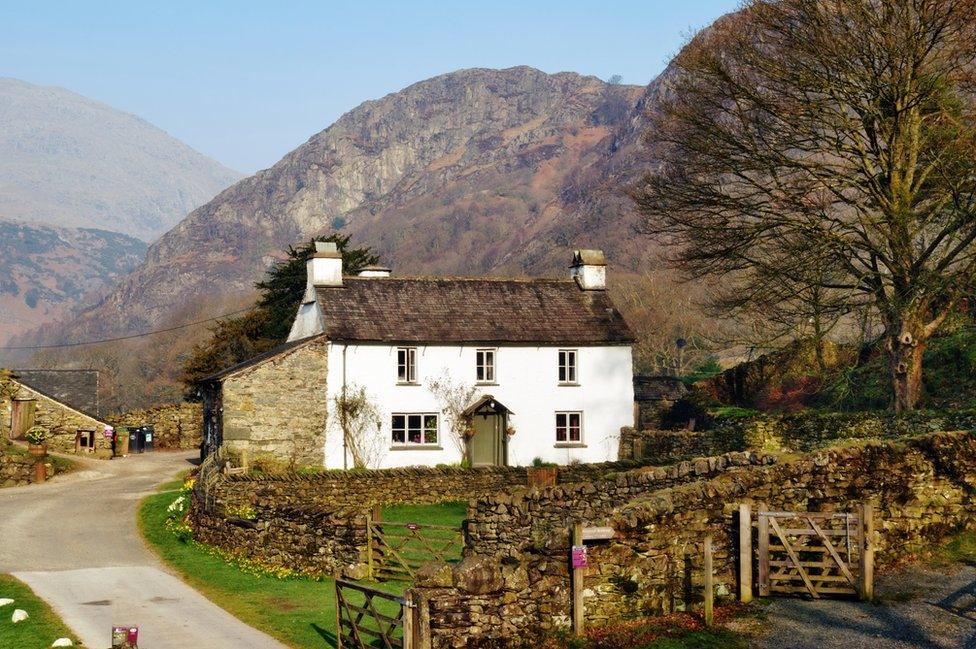
The 17th Century farm is regularly photographed by visitors to the lakes
The welcome is warm, but the star attractions are found scattered around the fields and fells radiating out of this most idyllic farmstead.
They are the Herdwicks.
Carrying two large buckets of feed and accompanied by Jack Russell Mo and rescue dog Chloe, Jo leads the way to a field straddling a small ridge.
The neighbouring woods echo with the calls of cuckoos and willow warblers, while swallows dart and dive through the air, skimming the verdant grass being nibbled by Jo's leading ladies and top tups.

The Herdwick sheep is synonymous with the Lake District
The Herdwick breed is some 10,000 years old and genetically it is still effectively wild, unlike other commercialised breeds, with 90% of its global population in Cumbria.
It is a sheep "beautifully adapted" for the high altitude slopes abundant in the Lake District, Jo says.
"Up on those mountains it's very cold, the rainfall is so high, you are very exposed," she says, as she rakes her fingers through the thick coat of one of her flock.
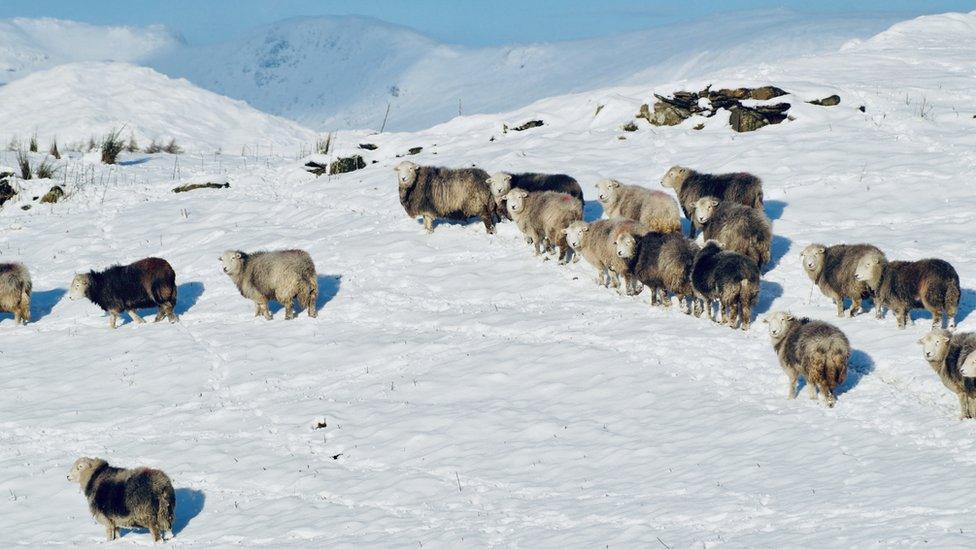
The Herdwicks are geared for living on the exposed hilltops
"Unlike other sheep that have hair on these faces these guys have got wool.
"Little ears stop them losing heat, they have wool on their thick stocky legs and a double-layer coat.
"They've got this beautiful first layer of fleece and on top of that a woolly overcoat with long hairs which flick off moisture and help keep them wind and water proof."
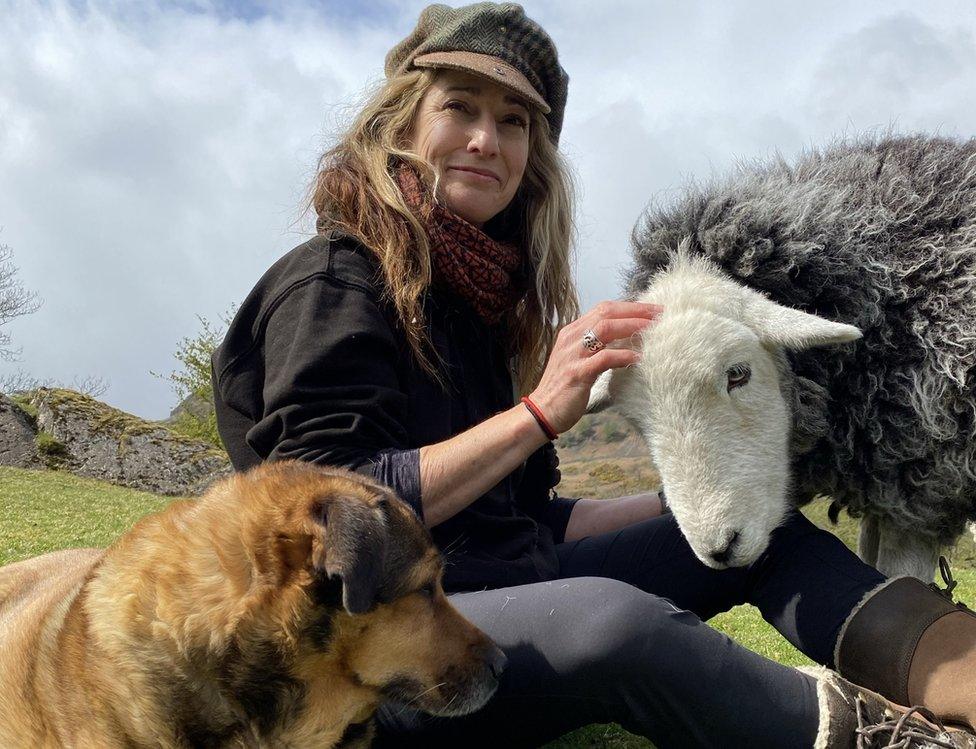
Jo Watson runs the Herdwick Experience (with a little assistance from her dog Chloe)
The Herdwick, whose name derives from "herdvyck" the old Norse word for sheep pasture, has helped shape the Lake District, Jo adds.
"When people first settled in this area thousands of years ago, there wasn't really much you could grow in this area.
"These sheep are really the only things that would live up there and became synonymous with this area.
"That very ancient system of local pastoral farming has shaped the landscape and social structure here."
The system of farming has barely changed since the Vikings arrived in the 8th Century.
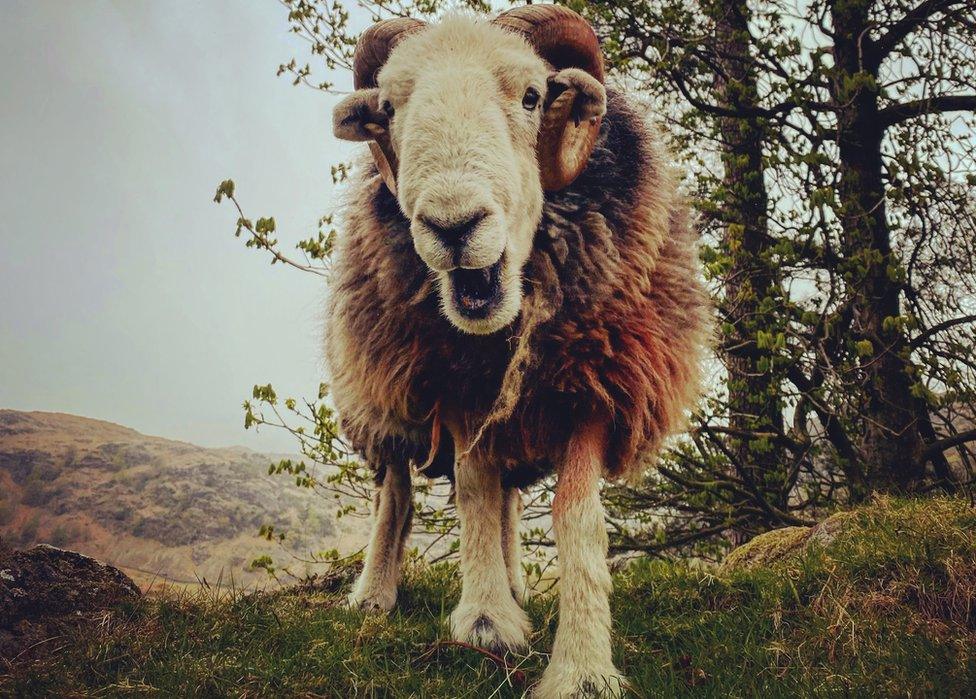
Un-castrated male Herdwicks carry distinctive horns
For most of the year, Yew Tree Farm's 1,000-head flock fends for itself across 1,000 acres.
In July all the sheep are gathered up, brought down to the farm and sheared.
Around October they are rounded up again for tupping (breeding), with the lambs expected in April and May.
Jon has been at the farm for about 18 years, with Jo, a former countryside ranger from Guildford in Surrey, joining him full time almost a decade ago.
Their's is one of the more than 230 Herdwick farms in Cumbria, while there are 90 flocks of more than 25 sheep.

The farm that Beatrix saved
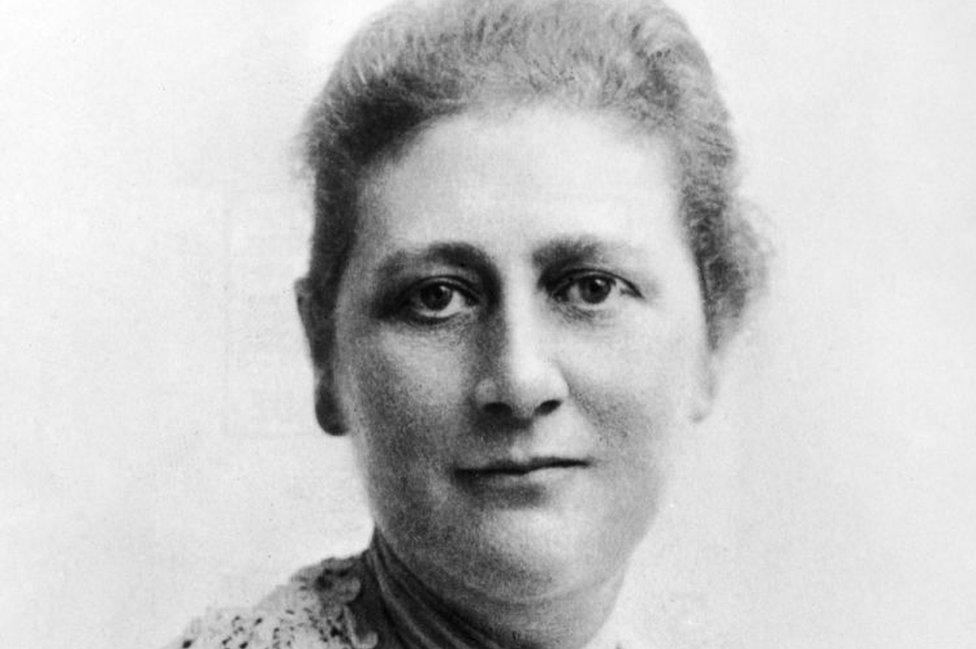
Beatrix Potter lived from 1866 until 1943 and, as well as writing books like the Tale of Peter Rabbit, reared Herdwick sheep in the Lake District
Yew Tree Farm was one of seven in the Lake District bought for preservation by Peter Rabbit-creator Beatrix Potter in the 1930s when struggling farmers were selling their land to the forestry industry.
She sold or bequeathed them to the National Trust with the stipulation that each should continue its traditional practice and have a certain number of sheep, which still pertains today.
"We are tenants of the National Trust and the sheep belong to the farm, not the farmers," Jo says.
"Those sheep up on the fells will never re-learn to live up there if you take them off, they've lived up there for centuries.
"Beatrix Potter ensured those sheep stayed in the area."
The farm was used as a stand-in for the author's actual home, Hill Top, in her 2006 biopic Miss Potter, external, one of the reasons it is so frequently photographed.

Renee Zellweger played Beatrix Potter in the film Miss Potter which was filmed at Yew Tree Farm
"You get used to the fact there will always be a camera poking over the top of your wall," Jo laughs, adding: "You learn not to pick your nose without thinking.
"We rent the farm, it is not ours, it's not a private place. That doesn't mean people can walk in and have a picnic on the grass - which has been known - but it's a striking building with a striking backdrop that really shouts 'Lake District' so we fully understand people want to photograph it.
"I mean, I live here and I still want to photograph it."

As well as farming, Jo is also an artist and runs the Herdwick Experience where she teaches the intricacies of the breed and lets people interact with what she calls her "ambassadors".
As soon as she approaches the gate into their field, the Herdwicks are lolloping over to greet her.
They are like large dogs, clambering over her and nuzzling her face and neck as she sits beside them explaining their special features.
"They are quite teddy bearish," Jo says as one attempts to fit in her lap, adding: "They look quite smiley. They are just really lovely to look at, really friendly."
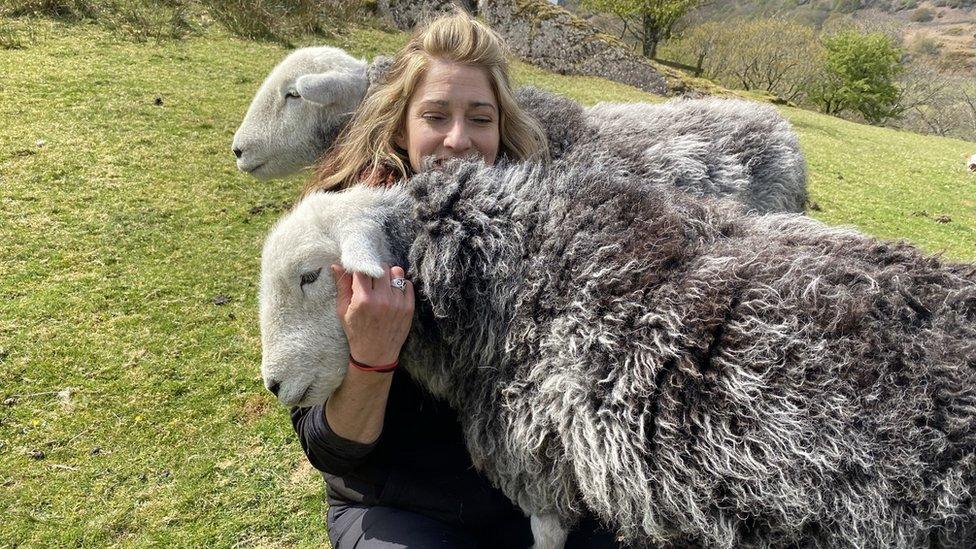
Jo Watson said her Herdwicks are very friendly
Herdwick lambs are always born black - it's not known why but Jo hypothesises it may be to absorb warmth up on the wild fells and provide camouflage among the stones.
This year the farm made headlines when one sheep gave birth to triplets, only the third time in 18 years that has happened.
"It's really unusual to have triplets," she says, adding: "Herdwick sheep are so close to being a wild sheep and they wouldn't want triplets.
"They don't even really want twins, because while they're having their second lamb what are they going to do with the first one?
"They can't look after it if it is weak and vulnerable and in bad weather, which sheep often choose to give birth in as there are fewer predators around."
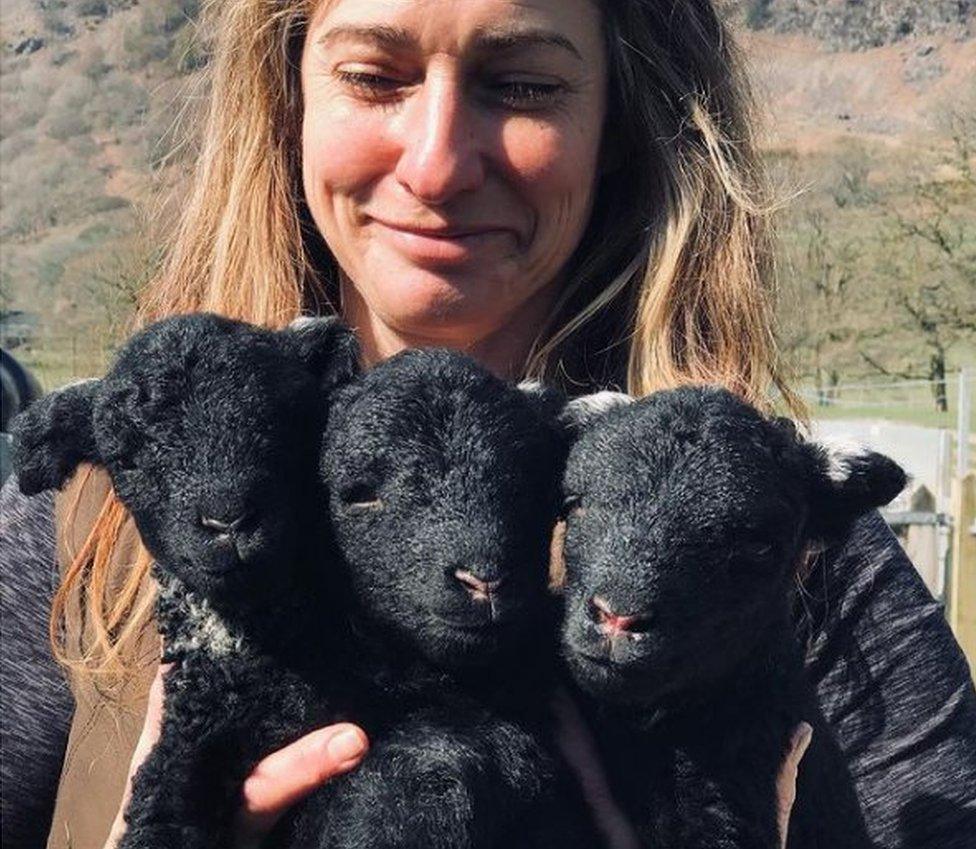
Jo Watson said it was rare to get Herdwick triplets
The triplets were one of a number of peculiarities this year, Jo says.
"Every one of our sheep was in lamb, that's really unusual.
"Also, normally we get about 70% single births and 30% twins, that was flipped around this year."
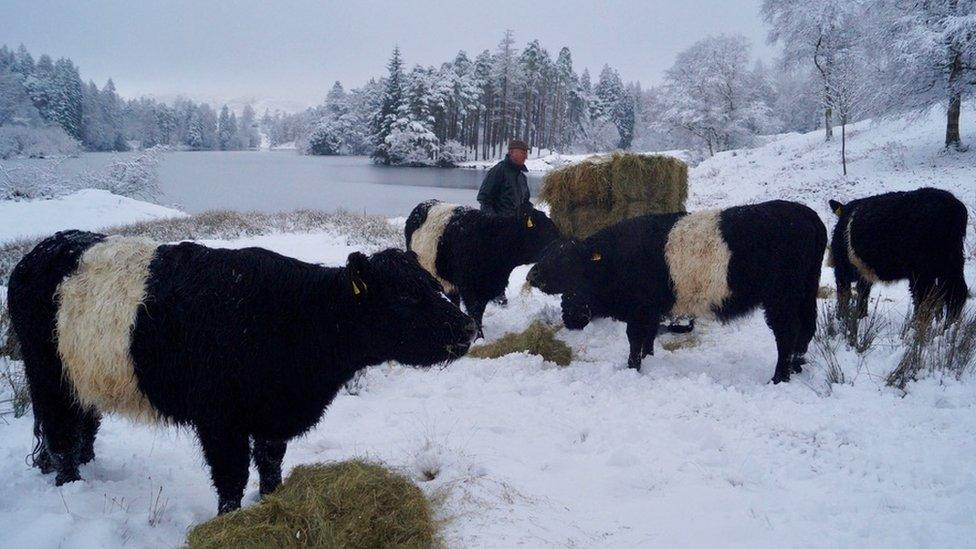
Yew Tree Farm also has a herd of belted Galloway cattle
Jo believes the spike in births was caused by last year's warm weather.
"This time last year all these trees were completely full in leaf with full canopy," she says, pointing to trees which, on an ever-changing May day, are distinctly not in bloom yet.
"This grass was thick and lush and so full of sugar and protein and I think that kicked their system into being super fertile. They just thought 'great, let's make babies'."
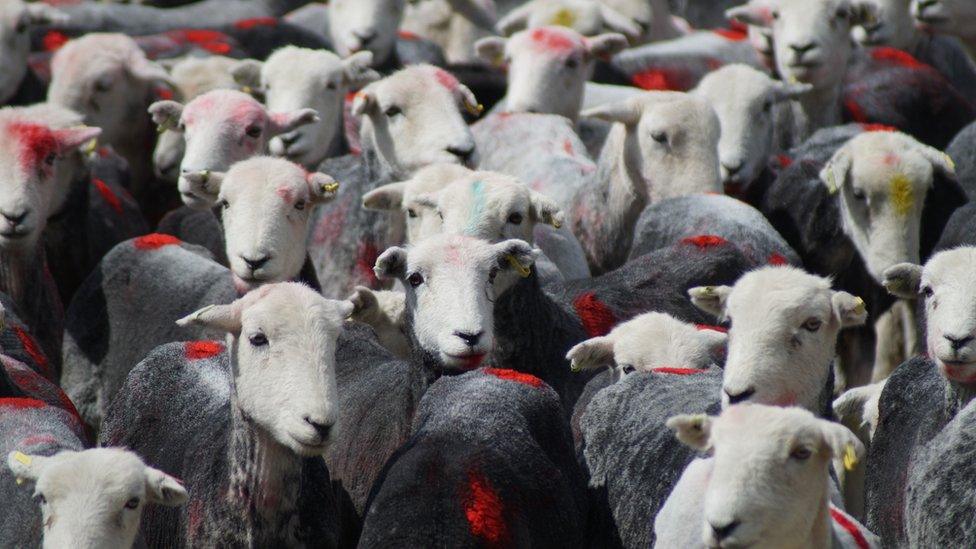
The Herdwicks are sheared once a year and then re-daubed with the farm's unique smit marks to identify their owner
By the time they are a year old, or a hogg, the Herdwick's fleece has turned a dark chocolate brown and their heads a milk white. As they age their coats become a mesh of greys, browns, blacks and whites creating that distinctive hue that wows many a Lake District visitor.
Their wool is thick and wiry, like a scouring pad, and lacks the finery of other fleeces.
Though uses have been found for the wool, from making rugs to being mixed with bracken to form a hardy compost, the Herdwick's real value to a farmer is its meat.
Yew Tree Farm's sheep are bought by restaurants and citizens, and they are a supplier to the BBC's MasterChef as well as celebrity chefs such as Hugh Fearnley-Whittingstall and Jean-Christophe Novelli.
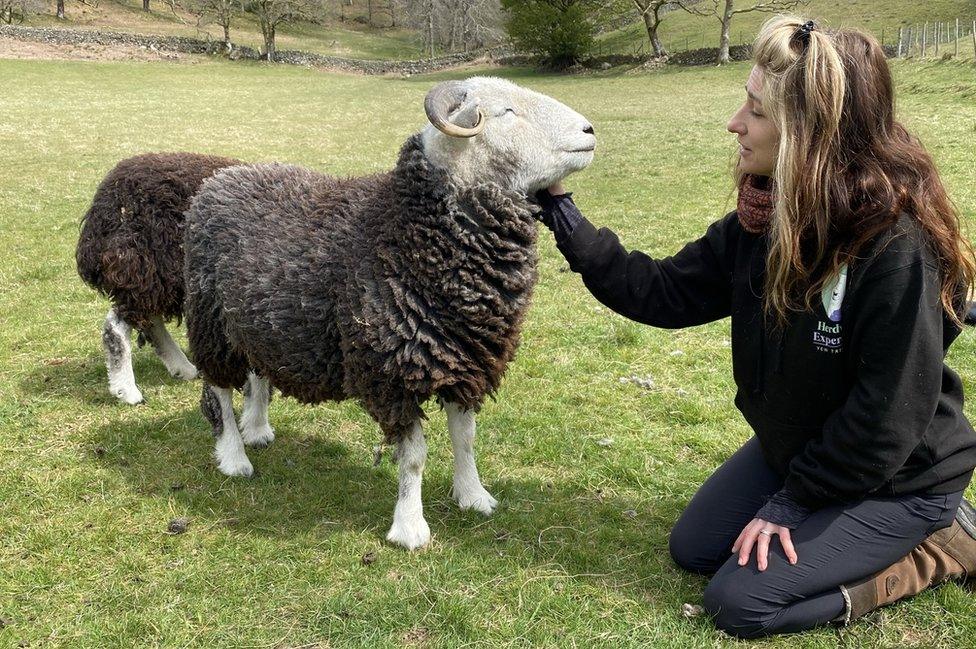
A sheep is known as a hogg when it turns one and develops a white head and brown wool
The farm has also had to diversify with the 17th Century, oak-panelled farmhouse now a holiday let.
Jo, who lives in a neighbouring extension with Jon and their three children Iona, 16, Jenny, 15, and Archie, 12, is also a professional artist as well as managing the Herdwick Experience.
"I really love my job," she says, cradling the head of one of her sheep.
"You don't ever get blasé about where you are, you don't ever take it for granted.
"It's a privilege to be here and it always will be."

Follow BBC North East & Cumbria on Twitter, external, Facebook, external and Instagram, external. Send your story ideas to northeastandcumbria@bbc.co.uk, external.
Related topics
- Published19 April 2021
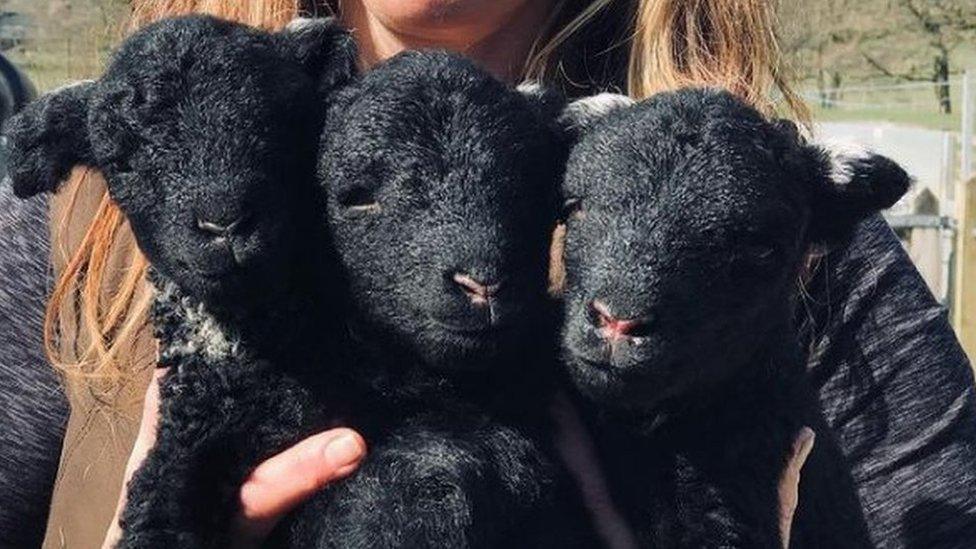
- Published10 September 2020
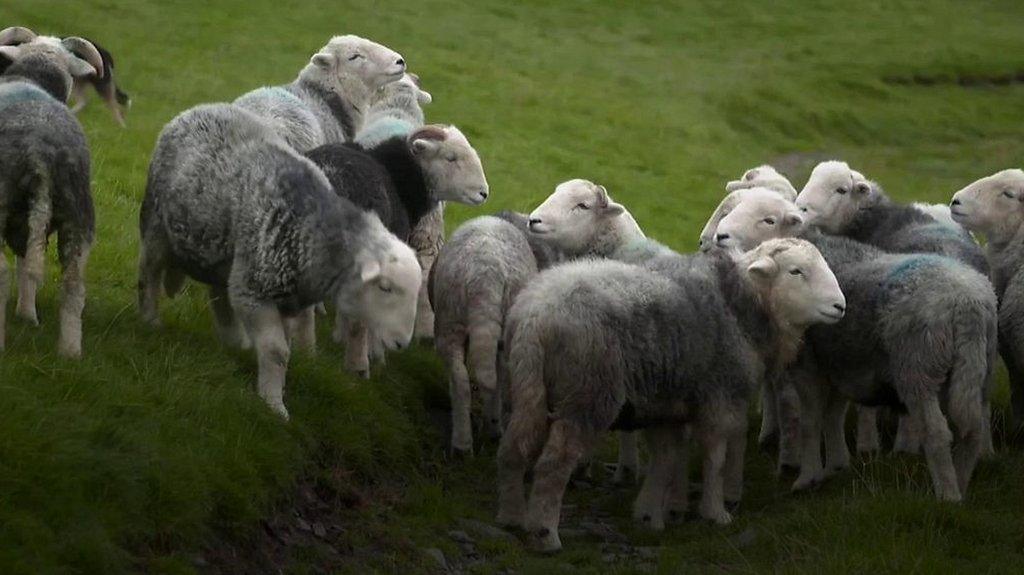
- Published10 October 2016
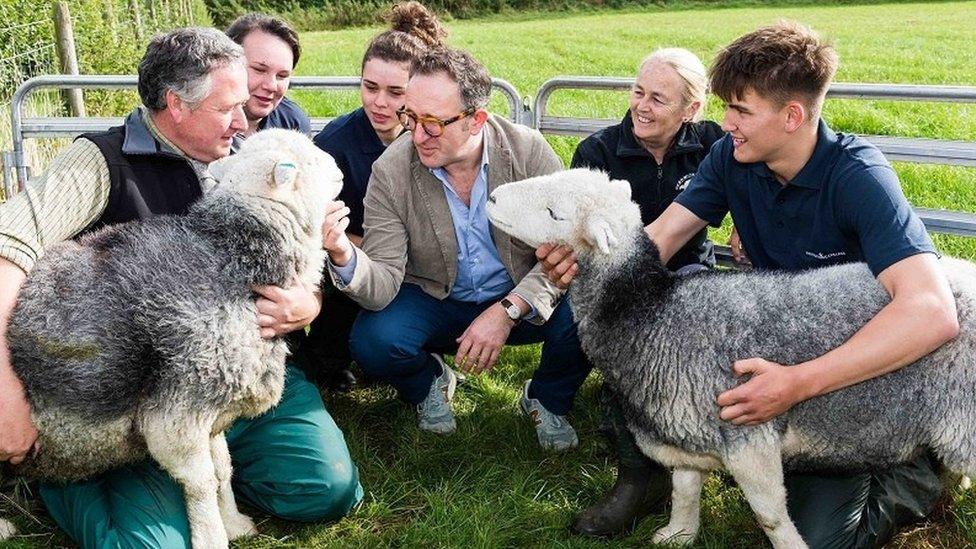
- Published11 October 2016
